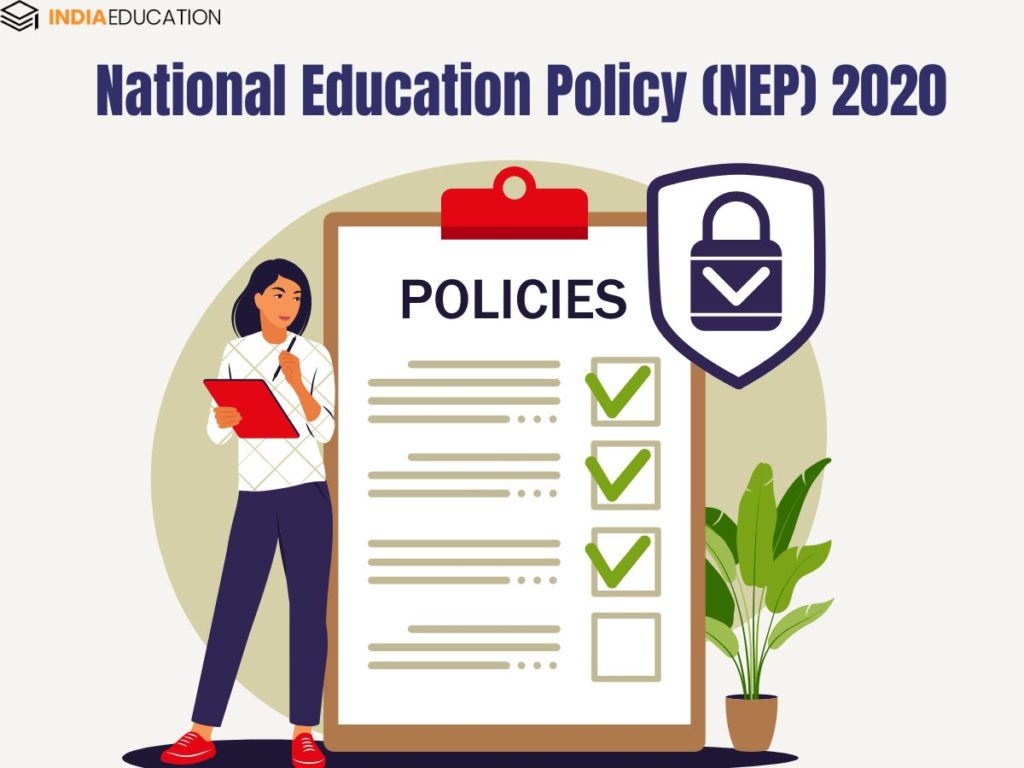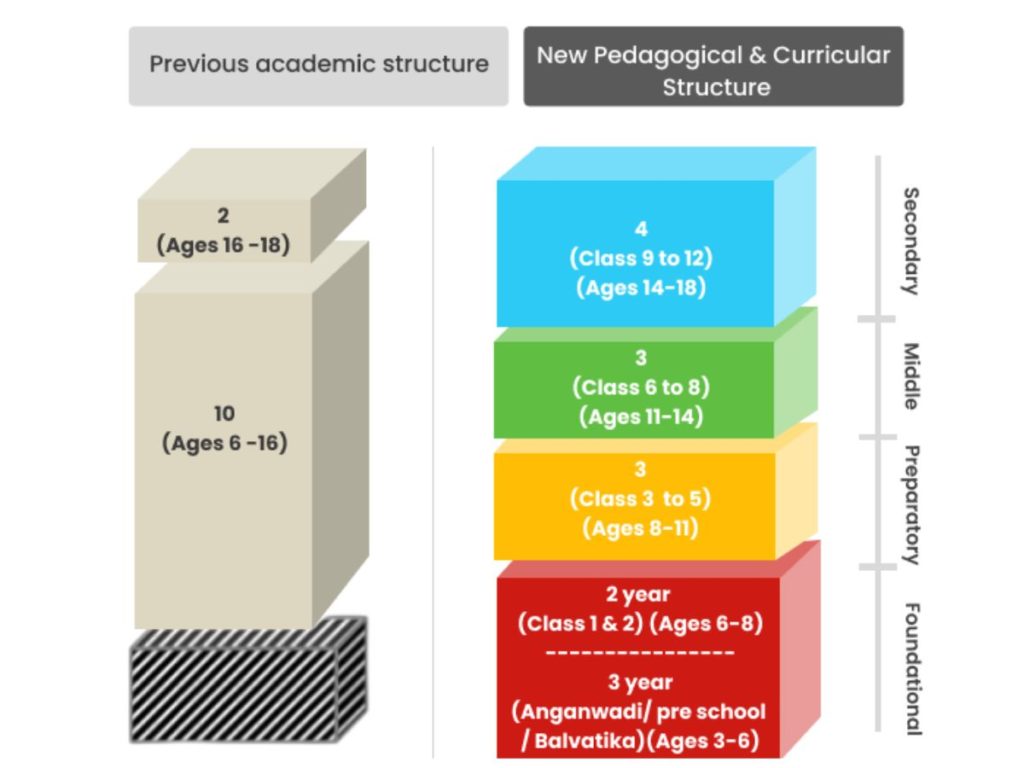
NEP 2020: All You Need To Know About New Education Policy In India
- Last Updated: August 7, 2023
- 12:04 pm

Education plays a very crucial role in the development of any nation, and India is no different. With India becoming the largest and most populous country in the world, the need for education is more than ever. In its relentless pursuit of providing education to all, India, after 34 years of following the same norms has now launched a new education policy called National Education Policy (NEP) 2020.
With so much information circulating around about NEP 2020, it’s understandable to be confused about what it exactly means, and how it will affect you. Hence, to provide students and whoever is seeking information about the new education policy in India, we have written this comprehensive article that covers everything you need to know about NEP 2020.
What is the New National Education Policy 2020?
The National Education Policy (NEP) 2020 is a major advancement of the Indian education system and was approved by the Union Cabinet on July 29, 2020. Build on the foundational pillars of Access, Equity, Quality, Affordability and Accountability, the policy aims to make India a “knowledge superpower” by 2040.
The NEP 2020 introduces several new reforms, including:
- A 5+3+3+4 structure for school education, with a focus on early childhood care and education (ECCE).
- A focus on skill development and entrepreneurship.
- The promotion of lifelong learning.
- A new regulatory framework for higher education.
- The establishment of a National Education Commission.
The new education policy in India has been praised by many education experts because of its goals and focus on providing students with 21st-century skills. However, some people are criticizing the policy claiming it to be too ambitious and difficult to be implemented.
To give you all more clarity about the new NEP 2020 policy, we have tabulated the major difference between NEP 2020 and NEP 1986 below:
Feature | NEP 2020 | NPE 1986 |
School education structure | 5+3+3+4 | 10+2+3 |
Focus | Holistic education, skill development, lifelong learning | Academic excellence |
Language policy | No state language should be imposed on students studying in any state | Hindi is the national language |
Equity and inclusion | Focus on ensuring equity and inclusion for all students | No specific mention of equity and inclusion |
Teacher Education | Major overhaul proposed | No major changes proposed |
Higher education | New regulatory framework proposed | Existing regulatory framework retained |
Research and innovation | Focus on promoting research and innovation | No specific mention of research and innovation |
Aim And Objective of NEP 2020
The NEP 2020 has serval silent features but the most important of them are listed below:
- Holistic education: The NEP 2020 emphasizes the importance of the overall development of children and not just their academic skills. This includes a focus on physical and mental health, character development, and civic engagement.
- Equality and inclusion: The policy aims to provide quality education to all children regardless of their backgrounds. This includes a focus on improving access to education for girls, children from marginalized communities, and children with disabilities.
- Skill development: Skill development is another factor that NEP is focusing on. This includes a focus on vocational education and entrepreneurship.
- Lifelong learning: Anther docus of NEP 2020 is the importance of lifelong learning. This means that NEP aims to prepare students for a world where they will need to be constantly learning and adapting to new challenges.
- Multilingualism: The NEP 2020 also aims to provide students with the opportunity to get education in the mother tongue/regional/local language. This means that students will not be restricted to getting education in the English language only.
- Teacher Training: The new policy will be focusing on the need for continuous professional development of teachers, and provide mentorship and training to them.
What is NEP 5+3+3+4 Structure?
Wondering what is the meaning of the 5+3+3+4 structure released by NEP 2020. Let us help you understand the importance of it by diving deep into its four stages below:
- Foundational Stage (5 years): This stage is for children from the age of 3 to 8. It will focus on early childhood care and education (ECCE), language development, and play-based learning. Children studying in Anganwadi/pre-school/ nursery falls into this stage.
- Preparatory Stage (3 years): The preparatory stage is for children from the age of 8 to 11. The focus of this stage will be on basic literacy and numeracy skills, as well as subject knowledge in science, social science, and the arts.
- Middle Stage (3 years): This stage is for children from the age of 11 to 14. It will focus on developing critical thinking skills, problem-solving skills, and the ability to apply knowledge in real-world situations.
- Secondary Stage (4 years): This stage is for children from the age of 14 to 18, and will focus on preparing students for higher education and the workforce.
The NEP 5+3+3+4 structure will be replacing the current 10+2+3 structure. Here is a table summarising the key features of the NEP 5+3+3+4 structure:
Stage | Age | Focus |
Foundational Stage | 3-8 years | ECCE, language development, play-based learning |
Preparatory Stage | 8-11 years | Basic literacy and numeracy skills, subject knowledge |
Middle Stage | 11-14 years | Critical thinking skills, problem-solving skills, application of knowledge |
Secondary Stage | 14-18 years | Preparation for higher education and the workforce |

Concerns About The New Education Policy In India
The New Education policy has received a lot of praise from people and is believed to change the education system of India for good. However, like every other change, this change also brings a lot of concerns with it. Let’s take a look at these concerns raised by many education experts regarding the new education policy:
- Implementation: The NEP 2020 is a complex policy that will be difficult to implement effectively. There are concerns that the policy will not be implemented in a timely or effective manner.
- Cost: The new policy will require significant investment in infrastructure and teacher training. There are concerns that the government will not be able to afford to implement the policy.
- Adaptation: The education policy needs to be adapted by different states and regions. However, there are concerns that the policy will not be able to be adapted to the specific needs of different states and regions.
- Acceptance: The NEP 2020 may be seen as too radical by some stakeholders, and may not be accepted by them.
National Education Policy 2023
The National Education Policy (NEP) 2020 marked a significant transformation of the Indian education system, and its implementation is ongoing in stages.
The NEP 2023 is a minor revision of the NEP 2020, and it includes some clarifications and additions.
Here are some of the key differences between the two policies:
- Curricular and pedagogical restructuring: The NEP 2020 proposed a 5+3+3+4 structure for school education, while the NEP 2023 has clarified that this structure is only a recommendation, and states and schools can choose to implement it or not. The NEP 2023 also introduces the concept of “multiple entry and exit points,” which allows students to enter and exit the education system at different stages, depending on their interests and abilities.
- Language policy: The NEP 2020 stated that no state language should be imposed on students studying in any state, and the NEP 2023 reiterates this. The NEP 2023 also introduces the concept of the “three language formula,” which encourages students to learn three languages, including their mother tongue, a regional language, and an international language.
- Equity and inclusion: The NEP 2020 focuses on the need to ensure equity and inclusion in the education system, and the NEP 2023 reiterates this. The NEP 2023 also introduces the concept of “gender-responsive education,” which aims to address the specific needs of girls and women in the education system.
- Teacher education: The NEP 2020 proposed major changes in teacher education, and the NEP 2023 reiterates this. The NEP 2023 also introduces the concept of “Academic Bank of Credit (ABC),” which allows teachers to earn credits for their professional development activities.
Here is a table summarising the key differences between the two policies:
Feature | NEP 2020 | NEP 2023 |
Curricular and pedagogical restructuring | 5+3+3+4 structure | Recommendation only |
Language policy | No state language should be imposed on students studying in any state | Three language formula |
Equity and inclusion | Emphasis on equity and inclusion | Gender-responsive education |
Teacher education | Major overhaul proposed | Academic Bank of Credit (ABC introduced |
Evaluation of Education Policy In India Over the Years
Education plays a very important role in shaping a nation’s progress and development, and India has witnessed several policy initiatives over the years, intending to provide quality education to all. The following are some of the key education policies that have been implemented in India before the implementation of NEP 2020:
1. Kothari Commission
One of the earliest and most significant milestones in education policy in India was the Kothari Commission, officially known as the Indian Education Commission (1964-1966). The commission’s report, which was published in 1966, laid the foundation for many changes that have been implemented since then. The commission recommended a 10+2+3 structure for school education, a three-language formula, and a focus on vocational education.
2. National Education Policy 1968
The National Education Policy (NEP) 1968 was based on the recommendations of the Kothari Commission and aimed to provide a framework for the development of education in India during the post-independence era.
3. National Education Policy 1986
The National Education Policy of 1986 marked a crucial phase in Indian education policy. It highlighted the significance of early childhood education, adult education, and distance learning. The NEP 1986 introduced a number of new initiatives, including the National Literacy Mission, the Mid-Day Meal Scheme, and the Open School System.
4. National Curriculum Framework (NCF) 2005
The National Curriculum Framework (NCF) 2005 is a significant educational change in India. It promotes a student-centred approach, encouraging critical thinking and creativity. By moving away from memorization, it helps students become active learners, preparing them to succeed in a changing world.
5. Right To Education 2009
The Right to Education (RTE) Act, established in 2009, was an education policy that made education a fundamental right for children between the ages of 6 and 14 years. The act aimed to provide free and compulsory education to all children, addressing issues of access, equity, and quality in elementary education.
FAQs
The main goal of the National Education Policy (NEP) 2020 is to transform India’s education system to provide a holistic, quality education to everyone. It aims to equip students with the knowledge and abilities needed for personal growth and national development.
The NEP 2020 is built upon five fundamental pillars: Access, Equity, Quality, Affordability, and Accountability.
India has implemented four education policies to date. The initial policy was released in 1968, followed by the second in 1986. The third policy came into existence in 1992, with the most recent being formulated in 2020.
The 5+3+3+4 education policy refers to the structural framework proposed by NEP 2020 for school education. It divides the years of education into four stages: Foundational (ages 3-8), Preparatory (ages 8-11), Middle (ages 11-14), and Secondary (ages 14-18).
The new education policy for 2023 is all about transforming and implementing the existing education policy released in 2020.
Latest News
People Reading Now

CBSE Compartment Result 2023 OUT: Click For Direct Link



CSAB 2023: Special Round Registration Begins Today


